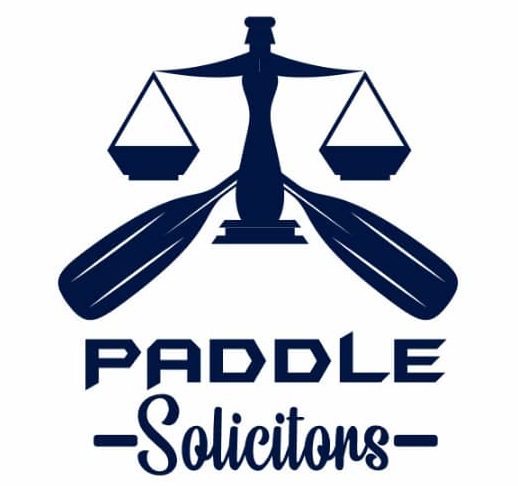
Can the name of an incorporated company be registered as a trademark by an entity other than the incorporated company?
Last week, I addressed the issue which bothers on whether a registered trademark can be used as a company name at the Corporate Affairs Commission by a person other than the owner of the trademark. If you missed this, you may read-up on paddlesolicitors.com
In my publication last week, a question popped up and I stated that it will be addressed this week. Hence, this publication.
This piece interrogates a circumstance where the name of an already incorporated company with the corporate affairs commission is proposed to be used or already registered as a trademark by an entity other than the incorporated company. There are instances that a company name is more popular than the brand/trademark owned by the company. Hence, the company name becomes the brand of the company.
What is the position of law regarding such trademark registration?
The Trade Marks Act did not expressly address this issue as the Companies and Allied Matters Act did. However, if a situation such as this occurs, in my opinion, there are three ways to resolve it.
Before stating my opinion, for proper appreciation, I find it pertinent to state the stages of registration of trademarks in Nigeria.
Search —Application—Acknowledgement—Acceptance—Publication—Certification
I will now proceed to state my opinion.
- Publication stage: before certificate is issued by the Nigerian Trade marks registry, it is mandatory that the proposed mark to be registered is published in a journal. If you come across the journal and find out that your company name or a mark similar to your company name is published, you may file an opposition on the ground that the mark is misleading or deceptive or causes confusion. This is in line with section 11 of the Nigerian Trade Marks Act.
For instance, an entity other than Sumal foods limited that attempts to register Sumal as a trade mark. Sumal Foods Limited is a known brand in the market for manufacturing biscuits. If same is branded on a product as a trademark, the consumers can be easily misled or deceived or even confused as to who the manufacturer is.
However, there is a likelihood of an argument from the opposing side that section 11 of the Trade Marks Act bothers on misleading or confusing marks between a registered mark and another or a registered mark and a mark at the publication stage.
In my opinion, section 11 does not only accommodate disputes between a registered mark and another or a registered mark and a mark at the publication stage but is wide enough to address the issue in this piece.
Another probable argument will be that trade marks and company names are two different subject areas and as such, it behooves on a company to register its name as a trademark. This will bring to fore the issue of first to file or first to use. I will address it later in this piece.
2. Post-certification stage: if you did not come across the journal, but realized after trade mark certificate has been issued to an entity that the mark the certificate was issued in respect of, is similar to your company name or the same, you may either petition the registrar of trademarks or file an action in the Federal High Court relying on section 11 of the trade marks Act.
3. Relying on equity: since the trade marks Act did not expressly envisage a circumstance wherein a company name could conflict with a trademark, nevertheless, it is my opinion that both marks should not co-exist in the market as it will cause confusion or mislead the consumers. This could amount to serious health or financial loss (on the part of the company and even consumer). For instance, a consumer who wishes to buy cartons of biscuit from sumal limited but saw another biscuit branded sumal, it is likely such consumer will opt for the new brand. Hence, a drastic reduction in the sales of Sumal limited. This situation could also happen in the pharmaceuticals which is even worse as it deals with the consumer’s health. An approach will be to file an originating summons before the Federal High Court to determine whether when there are two equities, the first in time will not prevail. i.e the incorporated company will prevail.
Note that the three approaches above are strictly the opinion of the writer. This may not apply to your situation and you are advised to seek counsel.
What happens if the person who subsequently registered the trademark sues the company for using his mark?
The company will raise a defence that he was already using the trade mark before the registered trademark owner started using it. This is in line with section 7 of the trade marks Act. However, note that this is a shield for the company and not a sword.
A similar issue was addressed by the Supreme Court of Nigeria in American Cyanamid company v. Vitality pharmaceuticals limited (1991) LPELR-SC.12/1989.
In this case, Vitality Chemist was regisitered as a business name and was into the business of importing and marketing drugs with the brand; GONORCIN. The plaintiff later trademarked the brand GONOCIN for the sale of drugs and took out an action against vitality and prayed for an injunction amongst several other reliefs. Vitality raised the defence of first use in line with section 7 of the trade marks Act and counter-claimed. All the courts from trial, court of appeal up to the supreme court dismissed the claims.
Recommendation
- The Trade Marks Act should be amended to expressly address this issue.
- Harmonisation of the trademarks registry and corporate affairs commission. Alternatively, they should make use of one portal.
Advice
- A company must always purchase the trademarks journal.
- Trademark all your marks or names used in carrying on business. This should include the registered company name itself.
Boluwatife Sanya
LL.B, B.L, Copyright (Harvard), ACIArb (U.K), MIP (WIPO, ARIPO, A.U)
Boluwatife is the Managing Partner of Paddle Solicitors. Paddle Solicitors is a full-service litigation, commercial and dispute resolution law office.
Hotline: +2348147439799



I read both articles and I found them really interesting.
On the issue of trade marking a Company name, I suggest that it be made a condition for the registration of a company and trade marking that such name which is sought to be registered or trademarked is not already in use and such that will mislead the public.
Secondly, the process of registering a company should involve the publication of the name so that members of the public can take notice.
On my second suggestion, if adopted, it will act as a shield and sword in that it can form the basis of an action to prevent a trademark or registration of a name that will be the subject of an action; it may also serve as a shield against anyone who seeks to challenge a trademark or a registered company name because equity will aid the vigilant and not the indolent.
Very insightful more grace sir